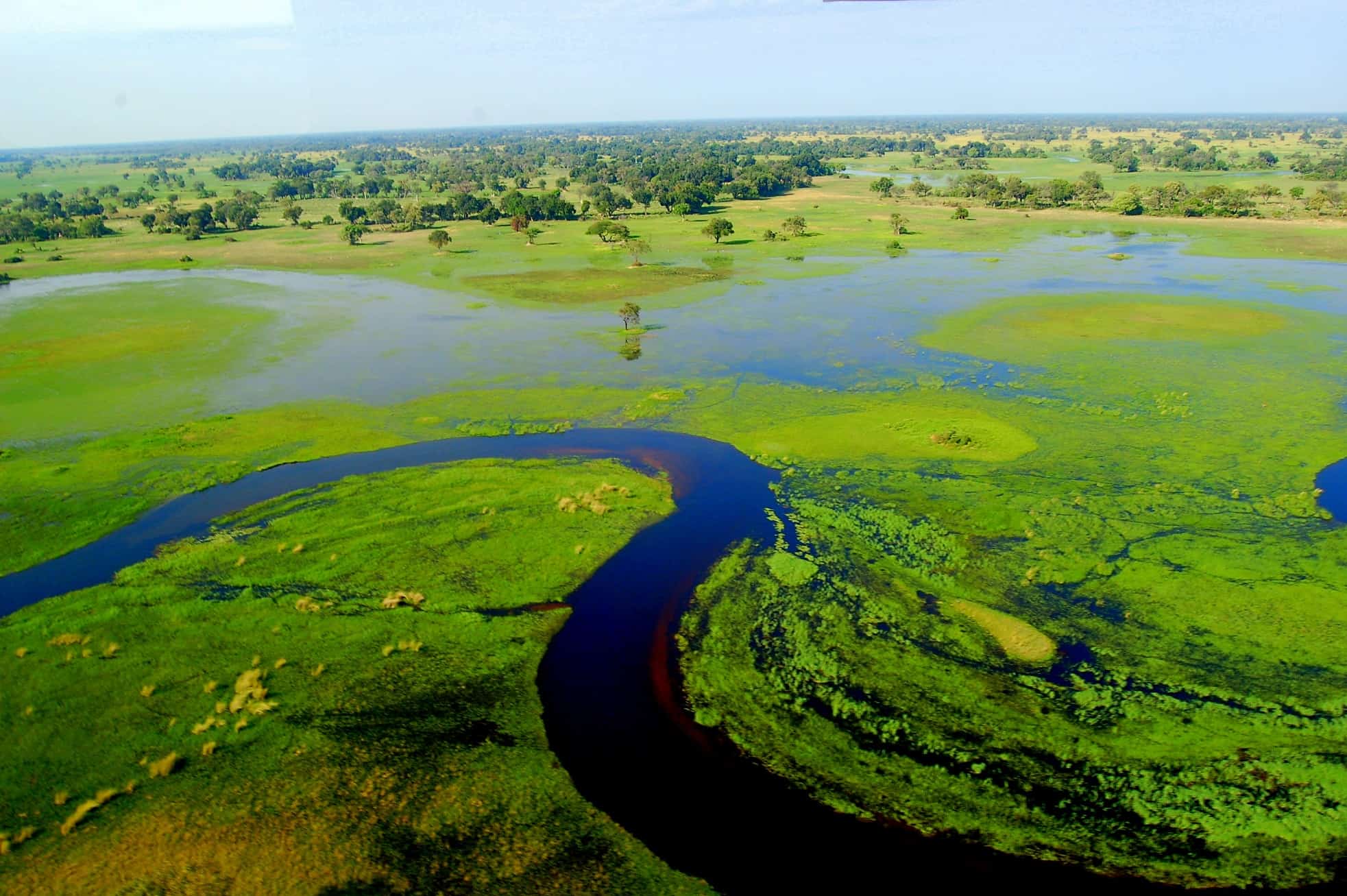Botswana is one of those countries that few North Americans visit, but it should be on the list of adventure sites. It’s filled with grasslands, wetlands, culture and amazing national parks just waiting to be explored.
Okavango Delta
 https://www.flickr.com/photos/sara_joachim/
https://www.flickr.com/photos/sara_joachim/ https://www.flickr.com/photos/sara_joachim/
https://www.flickr.com/photos/sara_joachim/ https://www.flickr.com/photos/sara_joachim/
https://www.flickr.com/photos/sara_joachim/
An amazing inland delta that was once an ancient lake, the Okavango River spreads into the Kalahari basin and evaporates without ever reaching an ocean. The size varies seasonally with the rains and is at its greatest level from June to August. This is when wildlife gather creating one of the greatest wildlife concentrations in Africa. The delta also provides water for plant life and the area is a green oasis in an otherwise arid region.
The gathering of animals includes both predators and prey and visitors have the opportunity to see elephants, giraffes, zebra and other grazers as well as lion, cheetah, leopard and hyena. There are game lodges that visitors can hire and brave tourists can even take a canoe down the river to see the herds close-up. Despite being a UNESCO World Heritage site, the park is threatened by a planned hydropower station that would affect the Okavango River and the delta.
Moremi Game Reserve
 https://www.flickr.com/photos/aftab/
https://www.flickr.com/photos/aftab/
One third of the Okavango Delta is set aside as a wildlife preserve to protect animals from poaching. I is the most easily visited part of the delta, covers almost 500 sq km and has habitats ranging from wetlands, flood plains, marshes and grasslands to forests and dry, scrub-covered areas.
Tracks lead through the reserve letting visitors explore the area and try their luck at spotting wildlife including the African wild dog that has a large population here. The elephants that live in the reserve tend to be easier to spot. Some areas are accessible only by plane but the majority of wildlife can be seen from the fringe camps.
Tsodilo Hills
 https://www.flickr.com/photos/sara_joachim/
https://www.flickr.com/photos/sara_joachim/
Another place recognized by UNESCO, this is one of the most unique records of human settlement in the world. The region is filled with caves, depressions, rock shelters and art. Really old art – some paintings are estimated to be 24,000 years old. There are over 4500 rock paintings at the site and other remnants of spiritual significance. Approximately 500 individual sites embody several thousand of years of habitation that’s linked to both the Bantu people and ancestors of the San.
The Rhino Cave has an image of a white rhino on the northern wall and many other paintings in red that surround it. White Paintings Rock has, well, a lot of white paintings, mostly of animals and humans. Some paintings depict humans on horseback which suggests that they were done in the 1800s and carbon dating of debris on the floor ranges from nylon buttons to the late Stone Age.
Kubu Island/Makgadikgadi Pan
 https://www.flickr.com/photos/andrew_ashton/
https://www.flickr.com/photos/andrew_ashton/
Kubu is a large rock in the middle of the Makgadikgadi salt pan a few kilometres from some mining towns. The pan is what remains of Lake Makgadikgadi which was once the size of Switzerland but has been dry for thousands of years. Technically it’s made of several smaller pans that were created as the lake dried up and become progressively smaller, widespread lakes. During the rainy season the pans become covered with water and animals gather here including one of Africa’s largest zebra populations.
Kubu Island is a sacred site and a national monument. It’s reached via four-wheel drive vehicles and has some camping facilities. Baobab trees stand in groves surrounded by rock in a sea of salt. An ancient wall has been the source of many artifacts and it is believed that the island was inhabited until about 500 years ago.
Lake Ngami
 https://www.flickr.com/photos/andrew_ashton/
https://www.flickr.com/photos/andrew_ashton/
The most fascinating thing about this lake is that it isn’t always there. It was first noted by famous explorer Dr. David Livingston and was described as a large expanse of water teeming with wildlife. Several years later it was completely gone. It appears and disappears, sometimes remaining for 20 years or more before vanishing again.
Ngami recently returned in 2000 and although it shrinks at times, water has remained in the lake since then. Visitors wanting to see the water should go now because there is no way of knowing when the lake will disappear, or when it will be back.


